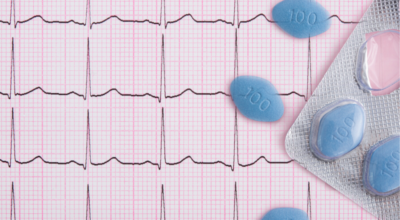State violence against protesting civilians: A global comparison
Published 1:54 pm Wednesday, June 29, 2022
ALAIN JOCARD // Getty Images
State violence against protesting civilians: A global comparison
The killings of George Floyd and Breonna Taylor by police in 2020 ignited anti-police brutality and anti-racism protests across the U.S. and the world. For many, the murders represented a shift in awareness of police brutality as an issue—between 2015 and 2020, there was a marked increase in U.S. adults who believed that police violence was a serious problem.
As protesters took to the streets, another shift was occurring: increased police violence against protesting civilians. Over the past several years, the use of excessive force by police and military against protesters—both domestically and globally—has steadily increased, according to a statement from the United Nations Human Rights Office. This trend includes violence against journalists covering protests and has made conditions for protesting more dangerous. The U.S. nearly tops the list for most incidents of state violence against protesters, placing sixth among all countries.
In order to compare levels of state violence against protesters globally, Stacker compiled data from the Armed Conflict Location & Event Data Project to see which governments have had the most violent reactions to protesting civilians since January 2021. Data is from January 2021 through June 2022.
Incidents of violence against protesters include abductions, attacks, and sexual violence by police, military, or another state actor, but do not include civilian-on-civilian violence, civilian or political militias, or gang activity. State responses to protests are classified as “interventions” and include attempts to disperse or suppress the protest without “lethal injuries.” “Excessive force against protestors” means serious or lethal injuries were reported. Protests where there was no formal, forced attempt to disperse civilians were not included in the ranking.
You may also like: From Stonewall to today: 50+ years of modern LGBTQ+ history
![]()
JOHAN ORDONEZ // Getty Images
#16. Central America (65 total incidents)
– Nicaragua: 29 incidents of state violence (#67 globally)
— 5 as response to protests (17.2% of incidents)
– Costa Rica: 9 incidents of state violence (#101 globally)
— 7 as response to protests (77.8% of incidents)
– Guatemala: 9 incidents of state violence (#101 globally)
— 7 as response to protests (77.8% of incidents)
In 2018, protesters in Nicaragua turned out to speak out about social security program changes, but things quickly turned violent as President Daniel Ortega’s national police force and pro-government groups began lashing out at protestors, many of them students and young people. According to a 2019 Human Rights Watch report, over 300 people were killed and more than 2,000 were injured in the protests, which lasted several months. The report further details that many protesters detained by government forces were brutally tortured.
Despite months of calls and protests for Ortega’s resignation, as well as a statement from the United Nations in 2021 calling on the Nicaraguan government to stop attacking peaceful protesters, Ortega has remained in power. Some have likened the nature of the state violence and Ortega’s authoritarian rule to Nicaragua’s old Somoza dictatorship, which stayed in power by similarly crushing student protests with militant violence. Ironically, Ortega was a part of the revolutionary and idealistic Sandinista uprising that eventually toppled and replaced the Somoza regime.
James D. Morgan // Getty Images
#15. Oceania (155 total incidents)
– Australia: 100 incidents of state violence (#38 globally)
— 100 as response to protests (100.0% of incidents)
– New Zealand: 37 incidents of state violence (#65 globally)
— 37 as response to protests (100.0% of incidents)
– Papua New Guinea: 10 incidents of state violence (#98 globally)
— 0 as response to protests (0.0% of incidents)
In both Australia and New Zealand, protests relating to Black and Indigenous rights have been met with police violence. In the wake of George Floyd’s murder by police in May 2020, Black Lives Matter protesters in Sydney were pepper-sprayed by police in a train station as they tried to board trains to leave but were unable to disperse. The following day, incarcerated protesters at Sydney’s Long Bay Correctional Complex were tear-gassed by prison guards in riot gear while spelling out “BLM” in the yard. In addition to protesters’ injuries, tear gas wafted through the neighborhood, harming residents in their yards and on balconies nearby. Another protest was held some days later in solidarity with the incarcerated protestors.
In New Zealand, one event is particularly memorable in its history of protest. The 1977-78 Bastion Point protest lasted over 500 days and centered around Māori activists who peacefully occupied the land at Bastion Point, or Takaparawhau, in protest of the colonizing government’s plans to build a housing development on their land. After well over a year of protest, 800 police and military personnel evicted and arrested more than 200 people and destroyed their dwellings and crops. The land was returned to Ngāti Whātua, the iwi (tribe) who lived there, in the 1980s.
ADALBERTO ROQUE // Getty Images
#14. Caribbean (190 total incidents)
– Cuba: 120 incidents of state violence (#32 globally)
— 36 as response to protests (30.0% of incidents)
– Haiti: 27 incidents of state violence (#71 globally)
— 18 as response to protests (66.7% of incidents)
– Jamaica: 16 incidents of state violence (#87 globally)
— 1 as response to protests (6.3% of incidents)
In 2021, protests in Cuba drew thousands of people inflamed over the government’s poor response to COVID-19, food and medicine scarcity, and power outages, among other issues. Human Rights Watch reported that recurring patterns of police and security abuse of protestors imply that Cuban authorities had a coordinated plan to violently shut down demonstrations. Authorities arrested hundreds of peaceful protesters, and reports say many of those imprisoned were subjected to violence and deprived of customary due-process rights.
Human rights abuses were also reported in Haiti during protests over government corruption, gas shortages, and widespread poverty that began in 2018 and have continued into 2022. The United Nations Commission on Human Rights reported that police barricades have restricted protesters’ and bystanders’ access to food, education, and medical services. Protesters were also subjected to tear gas and beatings by police.
MICHELE SPATARI // Getty Images
#13. Southern Africa (245 total incidents)
– South Africa: 101 incidents of state violence (#37 globally)
— 65 as response to protests (64.4% of incidents)
– Eswatini: 54 incidents of state violence (#55 globally)
— 35 as response to protests (64.8% of incidents)
– Zimbabwe: 52 incidents of state violence (#57 globally)
— 15 as response to protests (28.8% of incidents)
South Africa has a bleak legacy of state violence against protesters, particularly during apartheid. In 1960, police fired on a crowd of Black protesters who were demonstrating against pass laws, which required Black South Africans to carry passport-type documentation with them at all times. The event became known as the Sharpeville massacre; 69 protesters were killed and 180 were wounded.
In 1976, students in Soweto, South Africa, staged an anti-apartheid walkout and began peacefully marching toward Orlando Stadium. Police set dogs on the crowd and began firing at them. Officials claimed 23 protesters died, but other accounts put the total as high as 200 along with hundreds of others injured. Afterward, the state coordinated attacks on activists and tortured and executed political prisoners.
ISAAC LAWRENCE // Getty Images
#12. East Asia (466 total incidents)
– China: 295 incidents of state violence (#11 globally)
— 34 as response to protests (11.5% of incidents)
– South Korea: 108 incidents of state violence (#35 globally)
— 108 as response to protests (100.0% of incidents)
– North Korea: 26 incidents of state violence (#74 globally)
— 1 as response to protests (3.8% of incidents)
In June 1989, tens of thousands of protestors gathered in Tiananmen Square in Beijing to peacefully demand an end to government corruption, as well as to advocate for democratic ideals including free speech and press. In response, the Chinese government sent massive numbers of armed troops and tanks to repress the protesters. The troops opened fire on the crowds and crushed attendees. As with other violent state acts toward peaceful protests, the official death count at Tiananmen Square is misleading. The Chinese government claimed 200 dead, while a diplomatic message from Britain’s ambassador to China put the total at 10,000.
In November 2021, reports surfaced that critics of the Chinese government have been abducted or forcibly silenced by being taken to forced-labor camps. Both vocal dissidents and ordinary protesters—and even a famous tennis player—have disappeared or been confined to house arrest. Estimates of those illegally imprisoned number in the tens of thousands.
You may also like: How background checks on popular dating apps and websites work
YASUYOSHI CHIBA // Getty Images
#11. Western Africa (515 total incidents)
– Nigeria: 168 incidents of state violence (#25 globally)
— 69 as response to protests (41.1% of incidents)
– Mali: 78 incidents of state violence (#44 globally)
— 6 as response to protests (7.7% of incidents)
– Burkina Faso: 77 incidents of state violence (#45 globally)
— 10 as response to protests (13.0% of incidents)
Youth-led protests in Nigeria in 2020 began in response to police brutality perpetrated by the Special Anti-Robbery Squad. While the government promised to disband the force, it simultaneously targeted those involved in the protests through a campaign of imprisonment, sabotaging of bank accounts, and confiscation of passports. There have also been more explicit forms of violence—one protest ended with soldiers shooting into the crowd, killing at least 12 people.
In nearby Mali, protests in 2020 over perceived government corruption and political transition became violent, leaving at least 14 people dead and over 300 more injured. Security forces used tear gas and live rounds against protesters. Many of the dead were young people. Reports that the Anti-Terrorist Force was brought in to deal with protesters caused the prime minister to announce an official investigation.
ARSENE MPIANA // Getty Images
#10. Middle Africa (608 total incidents)
– Democratic Republic of Congo: 242 incidents of state violence (#14 globally)
— 123 as response to protests (50.8% of incidents)
– Cameroon: 154 incidents of state violence (#28 globally)
— 11 as response to protests (7.1% of incidents)
– Central African Republic: 74 incidents of state violence (#47 globally)
— 4 as response to protests (5.4% of incidents)
In 2016, the UN documented over 422 victims of human rights abuses over the course of a couple of days of protests in Kinshasa, the capital of the Democratic Republic of Congo. The protests broke out after sitting president Joseph Kabila refused to leave office at the end of his term. At least 53 people were killed and 143 were wounded, while nearly 300 were illegally arrested. In 2021, police again cracked down on protesters demonstrating against martial law being declared, allegedly firing without warning on people participating in a general strike; three died, including a 6-month-old baby, and at least 12 were injured.
Nathan Howard // Getty Images
#9. North America (723 total incidents)
– United States: 381 incidents of state violence (#6 globally)
— 319 as response to protests (83.7% of incidents)
– Canada: 216 incidents of state violence (#19 globally)
— 211 as response to protests (97.7% of incidents)
– Mexico: 126 incidents of state violence (#31 globally)
— 68 as response to protests (54.0% of incidents)
After Minneapolis police murdered George Floyd in May 2020, half a million people from across the U.S. turned out to protest police brutality against Black Americans. Over the course of the first several days of protests, Amnesty International documented 125 incidents of police officers, National Guard troops, and federal agents using excessive force against largely peaceful protesters. These included beatings, use of rubber bullets and sponge rounds, and misusing pepper spray and tear gas. There were also violations like illegal arrests and kettling, or trapping protesters in a confined space without a means of escape.
Back in the 1960s, civil rights activists and protesters were met with similar types of violence from state actors. In 1963, police attacked young protesters in Birmingham, Alabama, with fire hoses and police dogs, beat them with clubs, and unlawfully arrested them in large numbers. In Selma, Alabama, in 1965, voting rights activists were subjected to similar treatment when they were attacked with clubs, bullwhips, and tear gas in an event which later became known as “Bloody Sunday.”
In 2021 and 2022, several states across the U.S. enacted anti-protest legislation, which makes it more difficult—and more dangerous—for people to exercise their right to free speech and assembly. These laws largely narrow the options of where it is lawful to gather, make it illegal to block traffic, and employ the term “riot” in broad and subjective terms, which make it easier to criminalize protesting in general.
Victor Moriyama // Getty Images
#8. South America (758 total incidents)
– Brazil: 237 incidents of state violence (#15 globally)
— 48 as response to protests (20.3% of incidents)
– Colombia: 176 incidents of state violence (#24 globally)
— 103 as response to protests (58.5% of incidents)
– Venezuela: 113 incidents of state violence (#34 globally)
— 16 as response to protests (14.2% of incidents)
Protesters and dissidents in Brazil have long been subject to state violence. During the U.S.-backed military dictatorship of 1964-85, an estimated 20,000 people were tortured and 434 killed or disappeared. Protests in the country have also been met with excessive force by authorities since then.
During protests about rising transportation fares in 2013, police used tear gas and rubber bullets on demonstrators, leading to casualties and death. In 2014, people demonstrating against Brazil’s hosting of the FIFA World Cup were attacked with percussion grenades, tear gas, and pepper spray. In 2021, Indigenous land rights activists were targeted by riot police as they peacefully protested outside Congress over a bill up for debate that would compromise the official recognition of protected lands and were attacked with tear gas and rubber bullets.
AHMED MUSTAFA // Getty Images
#7. Northern Africa (853 total incidents)
– Sudan: 372 incidents of state violence (#7 globally)
— 316 as response to protests (84.9% of incidents)
– Morocco: 268 incidents of state violence (#12 globally)
— 252 as response to protests (94.0% of incidents)
– Algeria: 129 incidents of state violence (#30 globally)
— 126 as response to protests (97.7% of incidents)
During 2021 pro-democracy protests in Sudan’s capital city of Khartoum, demonstrators who turned out to voice opposition to a military takeover were met by security forces who used live bullets, tear gas, and, in other cities, beatings and arrests. The UN also received reports that 13 women and girls were raped at a protest by military officers. According to a 2022 Human Rights Watch report, hundreds or even thousands of protestors have been illegally detained or disappeared by the military, including children, since the 2021 protests.
In 2011, protesters in Casablanca, Morocco, demanding democratic freedoms and better economic and social conditions were beaten by police wielding truncheons after being kettled by police sealing off streets. In 2017, demonstrators taking part in the “Hirak” protests, who were similarly demanding government action on economic improvement, were again targeted. Allegations surfaced that police tortured people detained because of their suspected involvement in the protests. Roughly 216 protesters were imprisoned.
You may also like: Most pet-friendly cities in America
USLAN PRYANIKOV // Getty Images
#6. Caucasus and Central Asia (968 total incidents)
– Afghanistan: 654 incidents of state violence (#4 globally)
— 32 as response to protests (4.9% of incidents)
– Kazakhstan: 177 incidents of state violence (#22 globally)
— 68 as response to protests (38.4% of incidents)
– Azerbaijan: 62 incidents of state violence (#50 globally)
— 45 as response to protests (72.6% of incidents)
The Taliban’s takeover of Afghanistan in August 2021 sparked protests among Afghan citizens in several cities. In Jalalabad, both protestors and journalists were fired at and beaten by Taliban soldiers. In Kabul, several journalists covering protests were illegally detained and tortured by Taliban authorities before being released with threats against doing further reporting. Shortly after, a group of women protesting the formation of an all-male government was beaten by Taliban soldiers. Prior to the Taliban’s takeover, 2019 protests over several air raids that killed over 20 civilians were met with violence.
SUMY SADURNI // Getty Images
#5. Eastern Africa (1,127 total incidents)
– Uganda: 261 incidents of state violence (#13 globally)
— 103 as response to protests (39.5% of incidents)
– Burundi: 221 incidents of state violence (#17 globally)
— 3 as response to protests (1.4% of incidents)
– Ethiopia: 179 incidents of state violence (#21 globally)
— 31 as response to protests (17.3% of incidents)
During the 2020-2021 election cycle in Uganda, two presidential candidates opposing five-term incumbent Yoweri Museveni were arrested shortly before the election, sparking protests across the nation. Between 16 and 54 people were killed during demonstrations, which involved tear gas and live bullets, and hundreds were arrested. Journalists were among those beaten and attacked by security forces. The government also shut down the internet, inhibiting access to social media and making it harder for people to organize and for news to travel. Amid the internet shutdown, Museveni was declared the winner of the election, and authorities blocked people from entering or exiting the home of the most popular opposition candidate, Bobi Wine.
ABDUL MAJEED // Getty Images
#4. South Asia (1,638 total incidents)
– India: 1,183 incidents of state violence (#2 globally)
— 1,028 as response to protests (86.9% of incidents)
– Nepal: 185 incidents of state violence (#20 globally)
— 144 as response to protests (77.8% of incidents)
– Pakistan: 115 incidents of state violence (#33 globally)
— 63 as response to protests (54.8% of incidents)
In 2019, India passed the Citizenship Amendment Act, which provided expedited paths to citizenship for Hindu, Sikh, Buddhist, Jain, Parsi, and Christian immigrants, while excluding Muslims. Protests broke out across the country, and at least 30 people, mostly Muslims, were killed by police. Others were wounded by beatings, tear gas, and live bullets, and over 1,500 protesters were arrested. The government shut down internet access in several areas of the country, including regions heavily populated by Muslims.
YASIN AKGUL // Getty Images
#3. Middle East (1,673 total incidents)
– Turkey: 522 incidents of state violence (#5 globally)
— 467 as response to protests (89.5% of incidents)
– Yemen: 346 incidents of state violence (#8 globally)
— 35 as response to protests (10.1% of incidents)
– Iran: 300 incidents of state violence (#10 globally)
— 167 as response to protests (55.7% of incidents)
After Turkey pulled out of an international pact that promoted awareness about gender-based and domestic violence in 2021, protests broke out across the country. Police responded to protesters using tear gas and rubber bullets after putting up riot barricades that made it impossible for crowds to disperse. Back in 2013, demonstrations known as the Gezi Park protests erupted after a group of protesters who were trying to prevent a park from being destroyed were violently removed by police. The protesters were subjected to beatings, tear gas, and the burning of their tents by police. Protests spread around the country, expressing dissent at the treatment of the Gezi Park defenders. A reported 8,121 protesters were admitted to Turkish hospitals during the duration of the protests for injuries sustained at the hands of the police.
Epsilon // Getty Images
#2. Europe (1,808 total incidents)
– Russia: 834 incidents of state violence (#3 globally)
— 728 as response to protests (87.3% of incidents)
– United Kingdom: 220 incidents of state violence (#18 globally)
— 219 as response to protests (99.5% of incidents)
– Germany: 165 incidents of state violence (#26 globally)
— 164 as response to protests (99.4% of incidents)
Russian protesters have taken to the streets to demonstrate against the war in Ukraine, with thousands unlawfully arrested. Roughly 5,000 protesters were arrested on March 6, 2022, alone. Within the first week and a half of Russia’s invasion of Ukraine, roughly 13,500 people were arrested. Rare audio recordings of interrogations of protesters by police reveal physical and verbal abuse and torture. In 2021, Human Rights Watch reported that over 5,000 protesters were detained during protests over the arrest of prominent Putin critic Alexei Navalny, while many were beaten and tasered by police.
You may also like: 50 famous things banned in the US
OPA Images // Getty Images
#1. Southeast Asia (2,915 total incidents)
– Myanmar: 2,323 incidents of state violence (#1 globally)
— 675 as response to protests (29.1% of incidents)
– Philippines: 346 incidents of state violence (#9 globally)
— 29 as response to protests (8.4% of incidents)
– Indonesia: 176 incidents of state violence (#23 globally)
— 120 as response to protests (68.2% of incidents)
Since Myanmar’s military overthrew the democratically elected government and established martial law in February 2021, more than 2,035 protesting and nonprotesting civilians have been killed by military forces, and over 14,000 people have been detained. According to testimony given by Myanmar police officers who defected and fled to India after the coup, police were given orders to shoot protesters. Reports of tear gas, rubber bullets, and beatings at the hands of police have also surfaced. Human Rights Watch has labeled these offenses as “crimes against humanity.”
You may also like: America’s ambitious bet on wildlife crossings






















